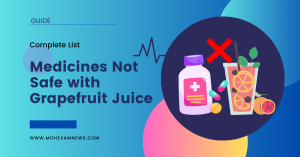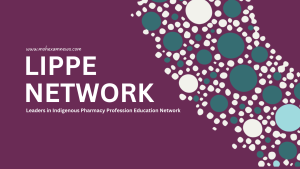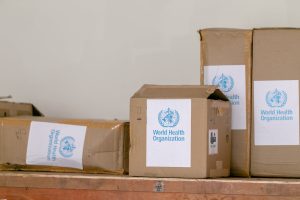USP Chapter 797: Best Practices Explained
Hospitals and Health systems are always working hard to ensure they follow all the latest revised USP Chapter 797 guidelines and recommendations. These guidelines are also known as The United States Pharmacopeia (USP) 797 guidelines which are a set of standards to ensure the safety and efficacy of products.
A few of the important key factors to consider.
- Revisions
- Beyond-Use Dates (BUD) Charts
- Immediate-Use Compounding
- Different risk levels
- Allergen extracts
- Standards
- Clean room requirements
- Dry heat depyrogenation
The new rules for USP Chapter 797 started on November 1, 2023. This is the date when people who work with these rules should start following them. But, local groups (like state pharmacy boards) may choose their own date to start. USP does not enforce these rules; it’s up to local authorities to make sure people follow them.
These guidelines are are of great help for pharmacists, pharmacy technicians and pharmacy students to understand the best practices in a much better way. This webinar is presented directly by quality and safety experts.
Basics of the USP Chapter 797
| Aspect | Details |
| Purpose | To set minimum standards for the preparation of CSPs to ensure patient safety and reduce risks, including: – Microbial contamination (non-sterility) – Excessive bacterial endotoxins – Variability in ingredient strength – Unintended contaminants – Ingredients of inappropriate quality |
| Key requirements | – Personal hygiene and garbing: Proper handwashing, gowning, and gloving are essential to prevent contamination – Environmental quality: Maintaining a clean and aseptic environment, including air quality control and surface disinfection – Quality assurance: Ensuring the quality of ingredients, equipment, and procedures used in compounding – Documentation: Maintaining accurate records of all steps involved in the compounding process – Training: Personnel involved in compounding must be adequately trained on USP 797 requirements |
List Of Standard Operating Procedures (SOPs)
USP Chapter 797 has defined activities that require documented Standard Operating Procedures (SOPs). This is required to maintain a standard for safe preparation and quality preparation of compounded sterile preparations.
There are a total of 46 SOPs required.
- Introduction And Scope (3)
- Personnel Training And Evaluation (6)
- Personal Hygiene And Garbing (5)
- Facilities And Engineering Controls (2)
- Certification And Recertification (1)
- Microbiological Air And Surface Monitoring (3)
- Cleaning, Disinfecting, And Applying Sporicidal Disinfects And Sterile 70%
- Isopropyl Alcohol (4)
- Equipment, Supplies, And Components (3)
- Sterilization And Depyrogenation (4)
- Master Formulation And Compounding Records (1)
- Release Inspections And Testing (2)
- Labelling (1)
- Sops (2)
- Quality Assurance And Quality Control (5)
- Csp Handling, Storage, Packaging, Shipping, And Transport (3)
- Compounding Allergenic Extracts (1)
Download USP 797 Guidelines pdf
Best Practices Guidelines
USP Chapter 797 itself provides best practice guidelines for health and safety. To develop institutional best practices protocols or guidelines must be done with the department of Quality and Safety must understand the needs of all stakeholders and institutional challenges.
While training for staff for USP 797, training must be done on best hands-on practices and main competencies for every employee e.g. USP 797 gowning procedure The main focus must be based on learning the practical impact of hands-on and situation-based cases, followed by written competency exams.
USP 797 Compliance Checklist
| Task | Frequency | Details | Status |
| Observe hand hygiene and garbing of staff | Every 6 months | Observe hand hygiene and garbing of staff (Note: Garbing order is no longer specified in the chapter and must be defined in the organization’s standard operating procedures or USP 797 gowning procedure) | ✅ |
| Gloved fingertip and thumb sampling (GFS) | Every 6 months | Clarify that GFS is done after “separate and complete hand hygiene and full garbing.” – Roll your fingers and thumb over the surface. – Multiple sampling devices were provided. – Longer incubation, two temperatures. | ✅ |
| Media fill testing | Every 6 months | – Simulate the most difficult compounding procedures with soybean–casein digest media. – Replace all components used in CSPs. | ✅ |
| Train staff in sterile compounding principles | Every 12 months | Provide appropriate training on sterile compounding principles and practices. | ✅ |
| Return demonstration of competency | Every 12 months | Clarify that GFS is done after “separate and complete hand hygiene and full garbing.” – Roll your fingers and thumb over the surface. – Multiple sampling devices provided. Longer incubation, two temperatures. | ✅ |
Beyond-Use Dates (BUD) Charts
The table below provides a summary as well as a comparison of the storage periods and Beyond-Use Dates (BUDs) in both the official chapter and the revised chapter.
- Category 1 CSP
- a BUD of 12 hours or less at controlled room temperature
- or 24 hours or less refrigerated following all other requirements defined in this chapter
- Category 2 CSP:
- a BUD of greater than 12 hours at controlled room temperature or greater than 24 hours refrigerated following all other requirements defined in this chapter
CSP is a short form for compounded sterile preparations.
| Official 797 (last revision in 2008) | Revised 797 (published June 1, 2019) |
| Low-risk in segregated compounding area – 12 hours at CRT* Low-risk – 48 hours at CRT – 14 days in a refrigerator – 45 days in a freezer Medium-risk – 30 hours at CRT – 9 days in a refrigerator – 45 days in a freezer High-risk – 24 hours CRT – 3 days refrigerator – 45 days frozen | Category 1 ≤ 12 hours at CRT ≤ 24 hours in a refrigerator Category 2 > Aseptically processed, no sterility, only sterile starting components – 4 days at CRT – 10 days in a refrigerator – 45 days in a freezer > Aseptically processed, no sterility, one or more nonsterile starting component(s) – 1 day at CRT – 4 days in a refrigerator – 45 days in a freezer |
Download Usp 797 Guidelines (FREE PDF)
Follow this direct link to Download Usp 797 Guidelines (PDF file)
or Download USP 797 Chapter SOPs List (PDF Download)
Download USP 797 Key Changes
For more downloads visit the USP official website, then download the section.
Don’t forget to check our review about ASHP and its benefits for pharmacists to stay up-to-date with clinical & pharmacy-relevant courses.
On a last note, being a healthcare professional it’s always recommended to keep yourself updated with all revisions from time to time. We must not forget, that USP Chapter 797 is a benchmark for health systems including pharmacies for sterile compounding. It has covered all the guidelines for the safety, quality also efficacy of sterile preparations.






